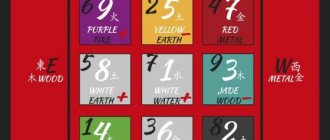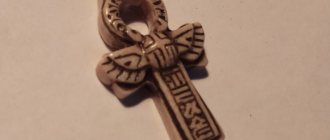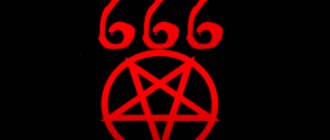In the mythology of various peoples and in religious traditions there are many symbols that characterize the connection of God with earthly people, the fictional world with the present. Thus, the tree of life is one of such elements that characterizes the development of life, honoring traditions and family values, and observing the commandments. For different peoples, the vision of this symbol may differ.
What does the tree of life mean?
It is generally accepted that the tree of life is a kind of mythical symbol denoting the connection between man, God, earth and heaven. It carries a deep meaning that not every person can understand. Here are some interpretations of the tree of life as a symbol of human essence:
- It can symbolize human life - from birth and development to death.
- The Tree of Life connects Heaven, Hell and the daily lives of people.
- Can serve as a symbol of human spiritual development.
- The fruits and leaves on a tree can have special meanings, such as symbolizing health.
- As a rule, a tree is depicted with thick roots and a crown, which gives it a massive, full-fledged, healthy appearance - this is a symbol of this state of the people, and branched roots are a sign of deep connection with religion, a solid foundation and a certain foundation for further development.
The symbol in question is present in almost all religions. What does the tree of life look like for each of them? In the form of natural wood or schematically - in the form of blocks directed from one to another. The content of this concept will be slightly different, but its essence and meaning for a believer, regardless of religion, will be similar.
How he is portrayed
The principles for depicting the Tree of Life are based on its meaning and the religious canons of each nationality. General characteristics include:
- Branches forming a dense crown, and symbolizing the people living on earth today;
- Roots, the branched mass of which speaks of centuries of life on Earth;
- The trunk, the function of which is to connect together the upper and lower parts of the symbol.
Such a mythology is present in the culture of every nation. Its essence: there is no life without the past and vice versa. No one should forget about the ancestors who gave life to their descendants. This extends not only to the physical side of earthly existence. Spiritual values and moral principles are no less important.
Those who have passed away are able to share their wisdom, energy reserves, and centuries-old experience of well-being with those living today.
Tree of Life in the Bible
In the Book of Genesis, the tree of life in Eden was a tree that was planted by God. It grew in the Garden of Eden along with the tree of the knowledge of good and evil. Eating its fruits ensured eternal life. God forbade the first people on earth - Eve, Adam - to eat the fruits of the tree of knowledge. By violating this prohibition, they were expelled from paradise, stopped using the gifts of the tree of life, thereby depriving themselves of eternal life.
Also in the Bible, the tree of life symbolizes the following concepts:
- the presence of God;
- God's help;
- taciturnity;
- wisdom of man;
- observance of commandments and church traditions.
The meaning of the amulet and who it is suitable for
Talisman Tree of Life
The Tree of Life is a symbol that has a very deep meaning. A talisman with such a sign is suitable for everyone; it does not contradict most religions. If you strive for self-improvement, this amulet is necessary: it will help you get rid of laziness, gain wisdom, and feel a connection with the divine nature. A person wearing this amulet will receive hard work and perseverance in achieving the goal. It is believed that the Tree of Life is a powerful protection for pregnant women, because it is a symbol of rebirth. Therefore, the energy of the talisman will not allow evil to penetrate the new emerging life. Such a magical symbol will provide reliable protection for your home and relatives. It carries the energy of the Family, which is considered the most powerful, and therefore is most often used to protect against damage and curses. By accumulating the energy message of the ancestors, the amulet is able to protect the family from illness, strife, and difficulties. Improve relationships between children and parents, restore marital love. Such an amulet has powerful protective power, because it contains the energy of the ancestors and the Family.
Tree of life in Islam
The Muslim religion has its own similar symbol - Zakkum - a tree growing in the middle of Hell, the fruits of which hungry, sinful people are forced to eat. What does the tree of life mean in this case? Perhaps this is a symbol of retribution for abandoning one’s God and sinful deeds. As punishment for sinners, a disgusting, fetid tree awaits, the fruits of which will destroy the human body. At the same time, people will not feel hungry, which will force them to use Zakkum as a constant source of food. This will be a kind of punishment for disobedience to religion and traditions.
Who is this talisman suitable for?
The Tree of Life amulet is perhaps the most universal one you can find. This image is found in many religions. Moreover, not only in the old pagan ones, but also in the relatively young Christianity. It is precisely this widespread distribution that allows the amulet to be used by people of almost any religion, without violating either the laws of conscience or the foundations of the accepted faith.
The amulet is suitable for people of any age and gender.
The Sacred World Tree symbolizes the simultaneous connection with all generations - present, past and future. Therefore, a person of any age, including even the smallest children, can wear such a talisman. In terms of gender, there are also no restrictions, because the Tree of Life contains harmonious energy that is equally well compatible with both the male and female sex.
The symbol can be used as a personal amulet, but will also become an excellent family amulet, improving the atmosphere of the house and protecting its inhabitants.
Tree of Life - Kabbalah
Kabbalah is a religious and mystical teaching in Judaism. The Kabbalistic tree of life looks like a set of ten sefirot - the fundamental concepts of this movement. The Sephirot are considered as a single whole, which personifies the activity of God, and each individual component of the tree will be a symbol of the manifestation of the divine principle.
In such a tree of life the following parts are distinguished:
- the middle pillar is a symbol of tenderness and balance;
- left pillar – severity;
- the right pillar is mercy.
Often the middle pillar symbolizes the short path of a hermit who has renounced worldly life. For the worldly path, the passage of all 10 sefirot is assumed. In the tree of life of Kabbalah, there is a difference between light and darkness, the feminine and the masculine. If we consider each sephirot, then above it will be female properties, and below it will be masculine.
Symbol No. 2 - Mobius strip
Another mysterious symbol of life is the Mobius strip. This kind of tape can be made by taking a long strip of paper and gluing its ends together, first turning one of them over. The Möbius strip is a geometric correspondence to the famous infinity symbol, also expressed in the sign of the number 8.
This symbol is a designation of the continuity and eternity of life. If you follow a Mobius strip, you will eventually return to the starting point, circumventing the entire surface of the figure.
Mobius strip - an ancient symbol of infinity
The ribbon has only one side and one edge, which carries the symbolism of the unity of the dual world. There seems to be a couple of sides to the figure. But try painting these sides with different colors. No matter where you start, eventually the whole figure will be painted the same color.
Tree of Life - Mythology
As a rule, the tree of life in mythology is a symbol of life and its fullness. It is often the opposite of the image of death. In mythological stories, the life cycle is presented from the moment of birth to maximum development, so one can compare this process with the development of a tree - from its planting, the gradual strengthening of the root system, the development of the crown until the period of flowering and the appearance of fruits.
Four Worlds
The structure of the Kabbalistic Four Worlds is often seen as a separate way of exploring the process of creation through emanation and involution. Kabbalists believe that each of the Ten Sephiroth contains each of the Four Worlds, as William J. Gray clearly demonstrated in his brilliant book, The Ladder of Light.
Thus, using this paradigm, it is possible to imagine the complete structure of the Tree of Life as part of one of the Four Worlds. In total there are 40 Sephiroth and 88 Paths, making Kabbalistic speculation quite complex, to say the least. However, there is another way of comparing the Tree of Life to the Four Worlds, and in this case it is divided into separate areas.
The highest World is Atzilut, which represents the World of emanations. This is the World of pure ideals, which are unchanging and unshakable, but at the same time dynamic rather than static. This World is the exclusive prerogative of Sephira Kether.
The next of the higher Worlds is Bria, in which Divine emanations are already manifesting. It is the impulse of creation, where forms and thoughts come together in synthesis. This World is the region of two Sephiroth - Chokmah and Binah.
Beneath the Divine Triad is the third Kabbalistic World - Yetzirah, the World of creation, in which aspects of personality and individuality merge to form separate beings, which are spirits and souls. Despite the formation of individual beings and the establishment of limitations, all beings of this World are still consciously connected to the One God. The following six Sephiroth belong to this world - Hesed, Geburah, Tiphareth, Netzach, Hod and Yesod.
Assia is the lowest World, in which souls merge with material bodies to fill the physical world and fill it with life. This World is the exclusive prerogative of Malkuth.
The paths that cross these Four Worlds can be considered important channels of creation and enlightenment. When studying them, special attention should be paid to their meaning. Thus, the Paths that connect the World of Assiya with the World of Yetzirah are 32, 31 and 29; The paths connecting the World of Yetzirah with the World of Briah are the 18th, 17th, 16th, 15th and 13th; and the Paths that connect the World of Bria with the World of Atzilut are the 12th and 11th. These connecting Paths can be considered as real portals between Worlds (Fig. 8).
Tree of life among the Slavs
The pagan Slavs have a legend - before the appearance of land on Earth there was an endless sea, in the middle of which there were two trees. Pigeons sat on them, which at a certain point in time dived into the water and took out stones and sand from the bottom. These components became the basis for the earth, sky, sun and moon in the middle of the sea.
Perhaps, according to this legend, the Slavic tree of life became a symbol of the creation of the world and its original center. This image is often found in folk works. The tree of life in Slavic mythology is sometimes represented in the form of a large tree, the roots of which reach to the deepest layers of the earth, and its branches reach to the sky and symbolize the passage of time and the surrounding space.
Literature
- Article of the same name in MNME
Toporov V.N. Ivanov V.V., Toporov V.N., Research in the field of Slavic antiquities, M., 1974; Fergusson J., Tree und serpent worship, 2 ed., L., 1873; Schröder L. von, Lebensbaum und Lebenstraum, in the book: Aufsätze zur Kultur-und Sprachgeschichte..., Breslau, 1916; Wilke G., Der Weltenbaum und die beiden kosmischen Vögel in der vorgeschichtlichen Kunst, “Mannus”, 1922, Bd 14; Holmberg U., Der Baum des Lebens, Helsinki, 1922-1923 (Annales Academiae Scientiarum Fennicae, ser. B, v. 16, No. 3); Dumézil G., Le festin dimmortalite. Etude de mythologie comparee indo-européenne, P., 1924; Perrot N.. Les représentations de larbre sacré sur les monuments de Mésopotamie et de lElam, P., 1937; Eliade M., Le mythe de lEternel Retour, [P., 1949]; by him, Le Yoga Immortalite et liberté, P., 1954; Widengren G., The King and the tree of life in Ancient Near Eastern religion, “Uppsala Universitets Arsskrift”, 1951, No. 4; Viennot O., Le culte de larbre dans lInde ancienne, P., 1954; Bosch FDK, The golden germ, sGravenhage, I960; Czer L., Der mythische Lebensbaum und die Ficus Ruminalis, “Acta Antiqua”, 1962, t. 10; No 4; Hancar F., Das urartdische Lebensbaummotiv, “Iranica Antiqua”, 1966, No. 6; Wrenn CL, Magic in an Anglo-Saxon Cemetry, in: English and Medieval Studies, presented to JRR Tolkien, L., [1962]; Friedrich P., Proto-Indo-European trees, Chi., [1970]; Shakti M. Gupta, Plant myths and traditions in India, Leiden, 1971; Cook R., The tree of life. Image of the cosmos, NY, 1974; James EO, The tree of life, Leiden, 1966.
Scandinavian tree of life
The Scandinavian tree of life – the World Tree or Yggdrasil – is represented in the form of a massive ash tree. Its distinctive features and symbols:
- Its branches touch the sky. The tallest one protects the abode of the Gods with its shadow.
- The tree of life has a lush crown that protects everyone who is located under it.
- It has three roots, which descend into the underworld, and then diverge to the kingdom of people, or to the abode of giants.
- According to the Scandinavian story, three sisters - Present, Past, Future - water the tree of life with the water of the Urd spring every day, so it is bright green and fresh.
- As a rule, the Gods gather at the Yggdrasil tree to resolve important issues, and the wisest eagle lives on its branches
- Despite any trials, the tree gives life to the universe and shelter to those who remain alive.
Northern tradition
In the Germanic runes, which, according to legend, were invented by the ruler of shamans and the mythical spirit Odin, the rune “man” means a man, a man who raised both hands up, calling on divine powers. The opposite sign is the rune “ir” - a sign of the feminine principle, and, in accordance with the ideas of numerous modern researchers, also a symbol of the “evil forces” of witches and druids. One cannot agree with such an interpretation, because in ancient times a woman personified wisdom, and only in later centuries was she credited with a connection with the devil and evil spirits. "Ir", strictly speaking, means yew, that is, one of the sacred trees of the Germanic tribes. In one ritual spell, the “ir” rune is understood as “all-encompassing”; in this case, the rune points us to the roots, to the “unconscious” knowledge that came to us from our ancestors. But the union of both runes gives us a tree of life, feeding on juices from below and above and being a symbol of eternal existence. It seems that the flowers on three stems growing in pots, so beloved in peasant folklore, are associated with the “man” rune and other similar ideas. The same images could be found back in the thirties of our century on old gypsy carts - they were a symbol of fertility, prosperity, success in life and in all endeavors. [bdgs]
Celtic tree of life
During the reign of the Celts, there was a certain tradition. Once their tribe occupied a new territory, the Celtic tree of life was chosen from it. Such a large tree in the center of the settlement was a symbol of the unity of the tribe. Around him, future leaders assumed supreme power, receiving permission from above.
In general, the Celtic people revered trees and accepted them as a connecting element between heaven and earth:
- earth is a physical symbol of the world;
- The sun in the sky is the supreme ruler;
- trees are a symbol of wisdom, the transfer of energy from the Sun and its connection with the earth's surface.
Since ancient times, the tree of life has been the personification of life, faith in God, and the connection between earth and heaven. Family generations are depicted in the form of a tree, which symbolizes strong traditions and ties in the family. This symbol is found in the religious views and mythology of many countries - China, Scandinavian and Eastern regions. Understanding its essence will be useful for the development of a person’s spiritual life.
How to make an amulet with your own hands
You can not only buy an amulet, but also make it yourself. Then it will not only be filled with centuries-old energy of wisdom, but will also receive positivity from the hands of the one who makes it.
Depending on your preferences, you can make a pendant, brooch, earrings, keychain, pendant.
The most affordable option is a design made from a ring, wire and beads.
Tool you will need:
- wire 20 cm long (preferably copper with a diameter of 1-2 mm);
- half a meter of wire of smaller diameter;
- beads with a hole in the middle;
- pliers;
- metal block and hammer;
- round base for winding wire.
To make a tree of life with your own hands, you must follow the instructions:
- Wrap the wire around the selected base.
- Using pliers, bend the ends of the wire at the junction, leaving 3 cm ends on both sides. To do this, cut off the excess length:
- Place the ends parallel to each other, as shown in the figure:
- Wrap the ends into circles and secure the workpiece with a hammer. Its relief should become flat:
- Fold the parallel pieces in half. Circular bends should be projected onto the circle:
- From this stage the construction of the Tree of Life itself begins. Bend a thin wire in half and bend it around the section of the circle located opposite the “horns”. Make several turns, trying to press the wire tightly:
- You also need to wind the remaining thin pieces of wire here. In this case, the turns should not be equalized in number. In the future craft, these are the roots, and they are located chaotically in the ground:
- Use wires to decorate the roots and trunk in an original way:
- A crown is formed in the area of the “horns”. To do this, the wires are twisted and bent in different directions, showing individual imagination. At the same time, the slenderness of the tree and its aesthetics must not be disturbed:
- Having secured one of the branches to the upper edge of the circle, they begin to gradually string the beads:
- Gradually all the branches are filled with beads (leaves), after which they are attached to the circle:
- The talisman is almost ready. If the beads are small, there are free spaces between the branches - the tree looks openwork. Large, densely strung beads practically fill the entire space inside the circle. At the last stage, the free ends of the wires are twisted around the base .
Another master class is presented in the video:
You can wear it around your neck, as a keychain on a bracelet, as a zipper from a handbag, or on your breast pocket.
Program cost
“Tree of Life” is a paid application; the free version has a limitation: adding a maximum of 40 people. Files with a large number of persons are opened in reading mode. The paid version is released in four versions.
The license is valid within the purchased version: 3, 4, 5.
| Option / License type | Standard | Portable | Gift | a commercial |
| Price, rub | 900 | 1440 | 3500 | 3900 |
| License | 1 PC, personal use | Non-profit | Non-profit | For any purpose |
| Peculiarities | On Windows and Mac | On a flash drive | Branded wooden flash drive | On Windows and Mac |
Important! Prices are indicated for residents of the CIS countries. For foreigners they are 3 times higher.










